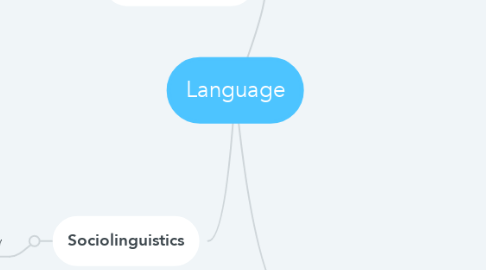
1. Neurolinguistics
1.1. Language and the Brain
1.1.1. How language is processed
1.1.1.1. Lateralization
1.1.1.1.1. Left hemisphere
1.1.1.1.2. Right hemisphere
2. Sociolinguistics
2.1. How language works in society
2.1.1. Language Varieties
2.1.1.1. Age
2.1.1.2. Gender
2.1.1.3. Education
2.1.1.4. Region
2.1.1.5. Socio-economic status/power
2.1.2. Linguistic variation
2.1.2.1. Time
2.1.2.2. Space
2.1.2.2.1. Regional Dialects
2.1.2.3. Contact
2.1.2.3.1. Creole
2.1.2.3.2. Pidgin
3. Psycholinguistics
3.1. FLA
3.1.1. Innatism
3.1.1.1. Lennerberg
3.1.1.1.1. Critical period
3.1.1.2. LAD
3.1.1.2.1. humans are biologically prepared to acquire language
3.1.2. Behaviorism
3.1.2.1. learning through imitation
3.1.2.1.1. stimuli-response
3.1.3. Interactionism
3.1.3.1. Language as a result of sociabilization
3.1.3.1.1. Brunner
3.1.3.1.2. Scaffolding
3.1.4. Stages
3.1.4.1. Pre-linguistic stage
3.1.4.1.1. Babbling stage
3.2. SLA
3.2.1. From L1 to L2
3.2.1.1. Transfer, imitation, negotiation of meaning and generalization
3.2.2. Innatism
3.2.2.1. Krashen's hypotheses
3.2.2.1.1. The Monitor Model
3.2.3. Cognitive theory
3.2.3.1. Mclaughlin
3.2.3.1.1. Attention-processing model
3.2.3.2. Bialystok
3.2.3.2.1. Implicit-Explicit model
3.2.4. Constructivist theory
3.2.4.1. Long
3.2.4.1.1. The interaction hypothesis
3.2.4.2. Swain
3.2.4.2.1. The comprehensible output hypothesis
